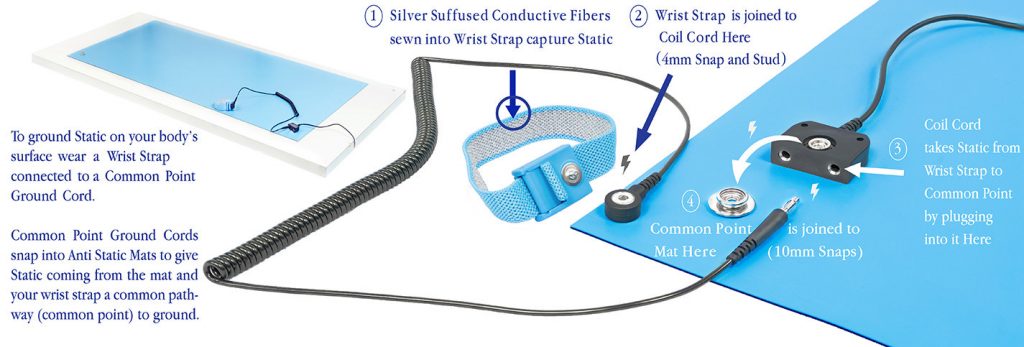
Answer: ESD Smocks present a conductive, static shielding barrier between electrostatic discharges (ESD) emanating from your body and any electronics that you may be near. Made with static dissipative fabric these garments also resist becoming charged with static electricity.
While ESD Smocks are not necessary for all instances where you are assembling computers or electronics they are highly recommended. Keep in mind the average cost of an ESD Smock ($30 to $50) versus the potential cost of replacing circuit boards or entire assembled devices.
While a person may be grounded using a wrist strap or other grounding methods, that does not mean that insulative clothing fabrics can dissipate a charge to that person’s skin and then to ground. Personnel clothing usually is electrically separate or isolated from the body.
ESD TR20.20 Clause 5.3.13 Garments

First, let’s look at the “static shielding” properties. Anything that is a conductor potentially serves a “static shielding” function. Conductors shield static because they attract electrons. Once the electron is on the conductor, it can be grounded by the conductor. Grounding is what prevents static from accumulating on surfaces and ESD (electrostatic discharges).
Conductors commonly used for grounding electrons are aluminum, carbon, nickel, and silver. In ESD Jackets, carbon threading is sewn into a grid across the surface of cotton or polyester in a patchwork. Much like a fence protects a yard, the grid pattern of the black carbon threading prevents static electrons on your body from leaping through the smock as electrostatic discharges (ESD) and zapping nearby electronics.
Do ESD Smocks Need to be Grounded?

Since a static control garment has conductivity built into it, there is always the potential danger that the person wearing it can become an isolated floating conductor if they are not grounded.
This is why it is always important to wear ESD clothing in concert with a properly grounded anti static mat and wrist strap.

How long do ESD Smocks last?
It is important to wash and dry your ESD garments properly. Over time, static control garments lose their conductivity due to repeated washing. Generally, a properly washed ESD smock can last 100 washes.
However, exposure to dryer heat can warp the threading, bleaches can erode the threading, and the use of anionic detergents (commonly sold in department stores) can strip away the positive ions on the garment, making it predisposed to carrying a negative charge in future use.
